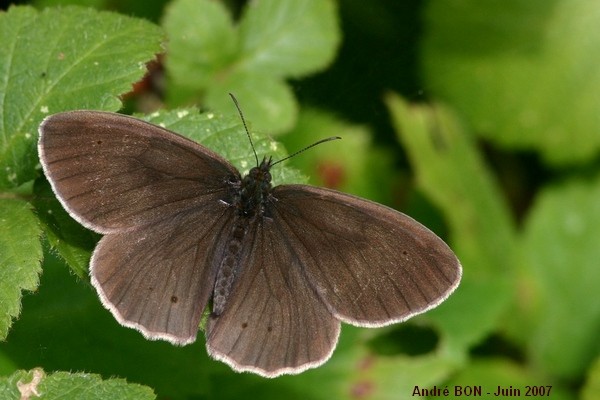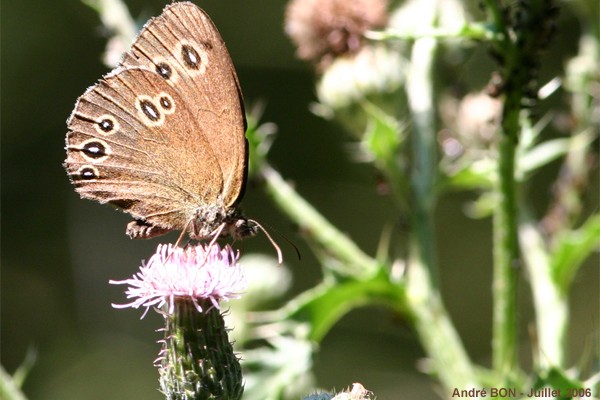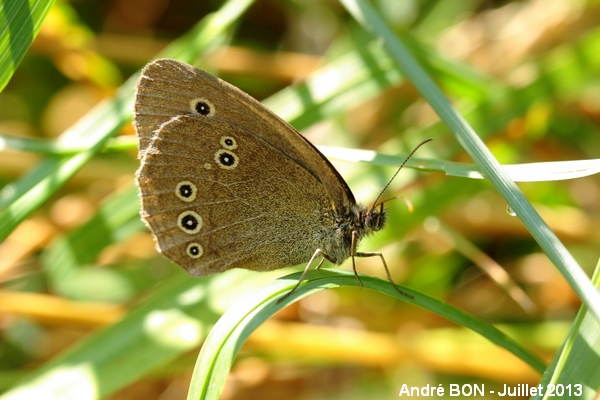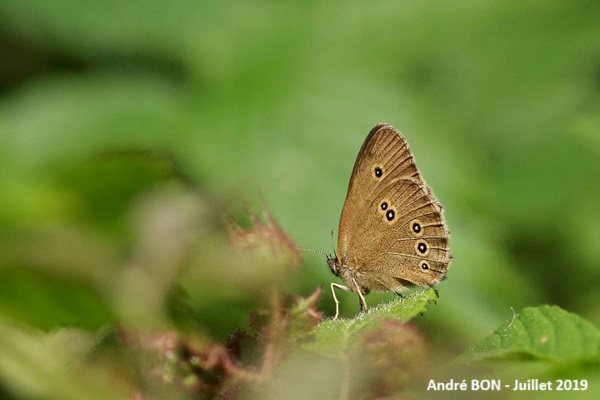




| Ringlet (Aphantopus hyperantus (Linnaeus, 1758)) |





|
|
Scientific name: Aphantopus hyperantus (Linnaeus, 1758) Common name: Ringlet French name: Tristan Order: Lepidoptera Suborder: Rhopalocera Family: Nymphalidae Subfamily: Satyrinae Wingspan: 40-48 mm Biotope: Clearings, woodland edges, damp meadows near woodlands and hedgerows. Geographic area: Europe except southern Spain, Italia and northern Scandinavia. The destruction of habitats with dense networks of hedgerows seems to be the main cause of the important decline of the Ringlet species in some regions. Flight time: June to August Number of generations : 1 Caterpillar: Pale yellowish brown with many black spots. The head is brown and the sides bear a wide pale stripe. Host plant: Couch grass, annual bluegrass and other graminae. |
This butterfly is characterized by yellow-edged spots with white pupils on the pale brown underside of the wings. Adults are dark brown on the upper side, darker on males than on females, with black ocelli. They become paler with age. Females are generally larger than males. |
| [To know more about the Ringlet] [Next picture] [Top] |

|
Like many other Nymphalidae, the Ringlet rests in the sunshine with its wings wide open. Here is a nice position for photographers. |
| [To know more about the Ringlet] [Next picture] [Previous picture] [Top] |

|
I thought I was taking a picture of a Meadow Brown. This is just when I got very close that I realized it was in fact a Ringlet. |
| [To know more about the Ringlet] [Next picture] [Previous picture] [Top] |

|
Same location, same period of the year, then same observed species. |
| [To know more about the Ringlet] [Next picture] [Previous picture] [Top] |

|
The merge of cultivated fields and the removal of hedgerows have certainly caused an important decline of populations of Ringlets here. This picture has been shot in a small place not affected by these changes. |
| [To know more about the Ringlet] [Previous picture] [Top] |

|
The week of hiking in the Carpathians was a bit disappointing for butterfly sightings. Here is one of the few observed species. |